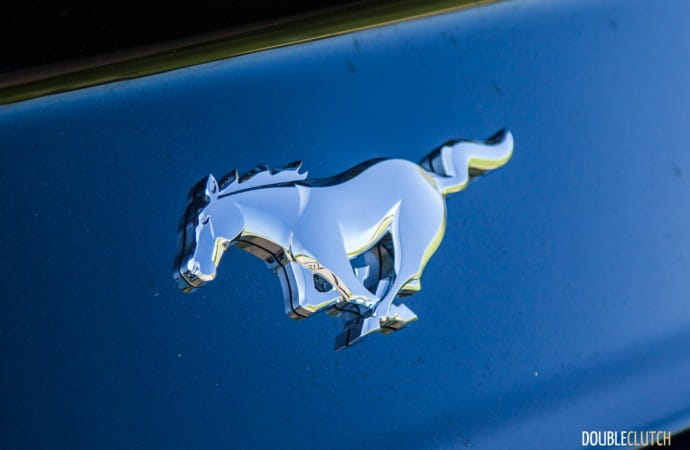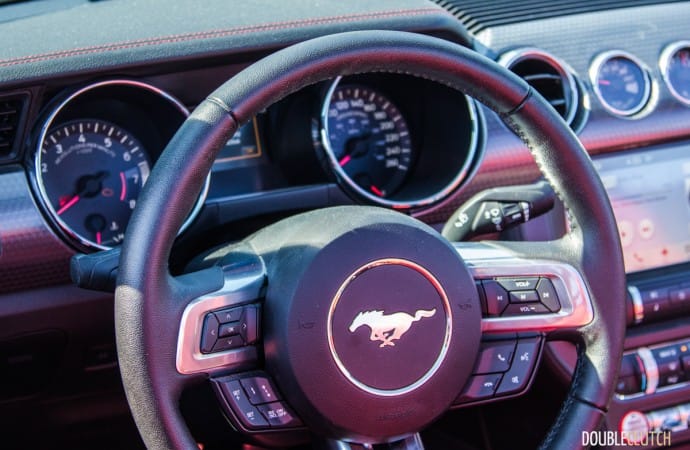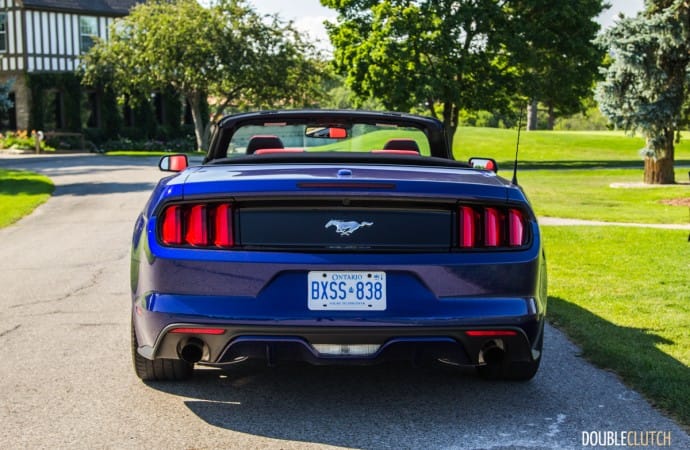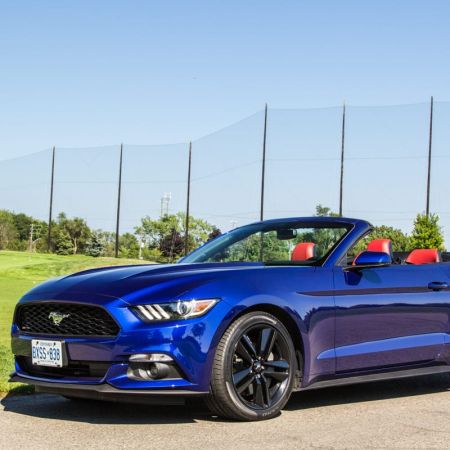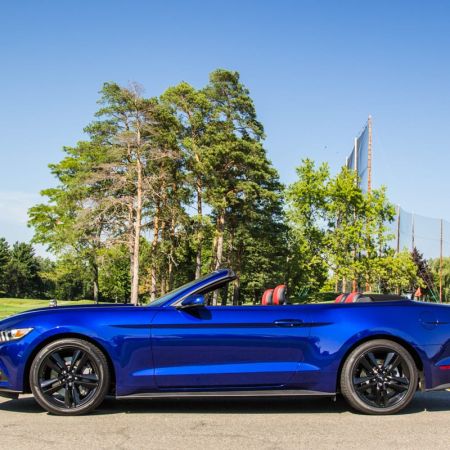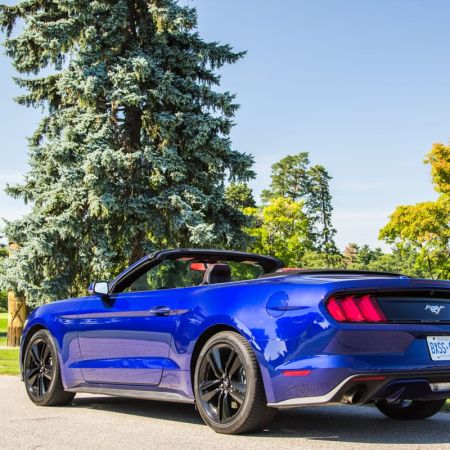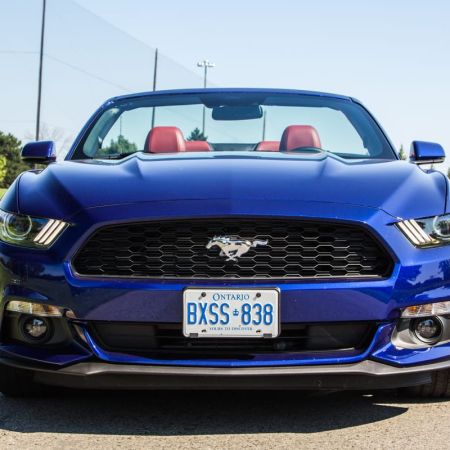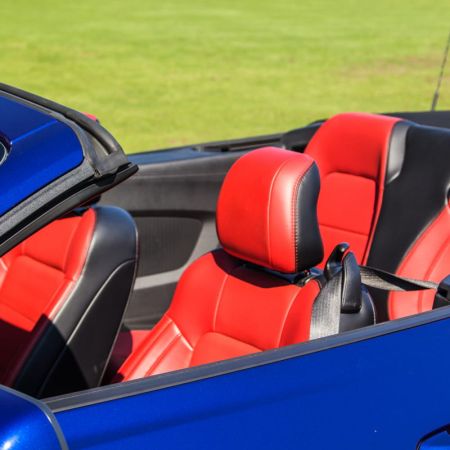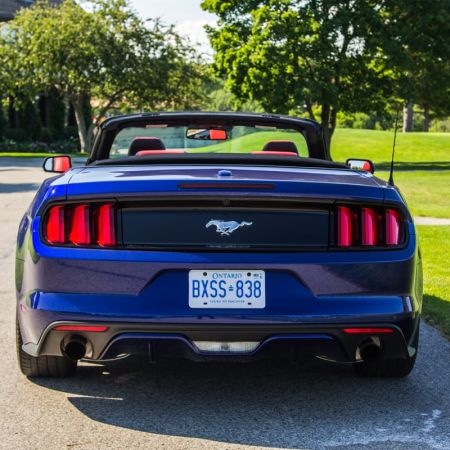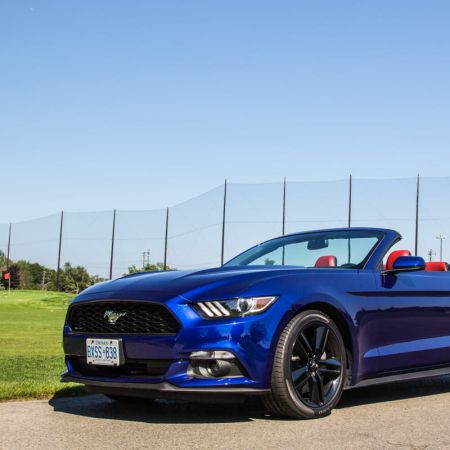Times are a-changing, as they say. Fuel efficiency is now the single-most important driver for most of the innovation in the entire automotive industry, and things are being literally turned upside down, in order to get the most out of the least amount of fuel. Storied brands like Porsche are now making money, hand over fist, on medium and large-sized crossover family vehicles, and their basic 911 now comes with turbos under that engine cover, much to the chagrin of purists (and internet commenters). We’re now seeing large luxury cars come with turbocharged four-cylinder engines – the power they can generate easily compares to six, and even eight-cylinder engines of the past. With that in mind, is it appropriate to drop this new technology into any kind of car, and expect good results?
Change can happen to even the most established of players. Case in point, the Ford Mustang. Dating way back to 1965, it would stick to more or less a single formula: muscular power, rear drive, and an emphasis on straight-line speed. It has been a long-time favourite for drag racing enthusiasts, thanks to the durable live axle sending power to the rear wheels, but it has also been a favourite for internet fodder. The Mustang has never really been known for being able to do anything than go fast in a straight line, but as the first line of this article says: times are changing. We picked up a Lightning Blue 2017 Ford Mustang Convertible EcoBoost with the Premium package for weeklong evaluation.
Debuting for the 2015 model year, the Ford Mustang is only up to its sixth generation in fifty-two years. Ford has gotten quite good with styling the Mustang so that it pays homage to its iconic past, but in a modern way. It’s not a small and svelte car by any means, and the portion ahead of the windshield is probably the most obvious styling statement – the hood seems to go on forever, when you’re in the driver’s seat. The various folds, creases, and power bumps molded into the hood add personality to what would otherwise be a featureless item.
Up front, standard HID projector low-beam headlamps and LED “tri-bar” daytime running lights look the part. Out back, there’s the trademark tri-bar Mustang taillights that blink sequentially when the turn signals are active. It’s all unmistakably Mustang. Our particular tester was also equipped with the EcoBoost performance package, which includes glossy black 19-inch wheels and 255-section Pirelli summer tires at all four corners.
It’s very easy to compare the look of the Mustang to the also-new 2016 Chevrolet Camaro (reviewed here). Both chase the retro look, but both also try to be modern, and recognizable – all at the same time. Both cars have their own devoted followings, and it’s often hard to convince somebody to jump ship from one camp, to another. Between the two, I would pick the Mustang. The Camaro projects a muscular look all its own, but I like to be able to actually see out of the cars I’m driving. The Camaro makes you feel like you’re sitting in a dark bunker, and the blind spots don’t help. Both cars come in convertible format, and both look considerably different with no roof, for obvious reasons. If the blind spot in either car is such a nuisance, you can always opt for the drop-top and stow it away, when the weather is good.
Inside, both cars continue to chase a retro-modern feel, but the Mustang does a good job balancing function, over form. There are a number of neat little quirks to the Mustang, such as the “Ground Speed” labeling in the speedometer and the trademark customizable interior LED lighting. The Mustang EcoBoost Premium Convertible is actually surprisingly well equipped, complete with heated and ventilated seats, and an 8-inch touchscreen that houses Ford’s latest SYNC 3 infotainment system (reviewed here). It’s leaps and bounds better than the old MyFordTouch system, boasting increased speed, responsiveness, and a less-cluttered interface, in general. I especially like that the touchscreen is now of the capacitive type (like today’s mobile phones), rather than resistive (like your old Nintendo DS). It makes for a much more modern and up-to-date experience. Android Auto and Apple Carplay still isn’t offered at the moment.
Space for two is generous up front, and the focus on the driver is evident, with all major controls falling intuitively to hand. The Camaro deviates a bit from convention with HVAC vents that live at the bottom of the centre console, pointing up at the front occupants. The Mustang is nicely conventional, with decent material quality all around, and enough direct-access buttons available, so you’re not forced to dive too far into nested menus. Space for rear occupants is much more restricted. Even though I have the driver’s seat set fairly upright, there’s not a lot of knee and leg room for anybody behind the driver. The Mustang Convertible can seat four, but carrying two in the back should be done only for short stints.
Under the hood of this particular convertible is the story-maker: Ford’s EcoBoost engine. We haven’t seen four-cylinder powertrains under the hood of a Mustang for a few decades, but with the advent of today’s technology, the four-cylinder Mustang is back. It makes some mighty claims, but would it hold up to the hype? Displacing 2.3L, it gets a twin-scroll turbo and intercooler attached, and also benefits from direct injection.
It’s similar to the super-hot 2.3L EcoBoost turbo-four seen in the Focus RS, but this engine is mounted longitudinally, with a different tune. Power is rated at a lofty 310hp at 5500RPM, and 320 lb-ft of torque at 3000RPM. For those who aren’t in the know, these power figures easily shatter the ratings on the famed 5.0L V8 (on the third-generation “Fox-body” Mustang) by over 100hp and almost 50lb-ft of torque – all from an engine less than half the size. People who like to look at numbers and specifications should be impressed.
Power is sent to the rear wheels (as it should be) via your choice of a six-speed manual transmission or a conventional six-speed automatic. Our particular tester came with the slick-shifting manual, and right away, you can tell it’s one of the better units on the market today. Shifter action is smooth, precise, and it’s configured to provide just the right amount of resistance and feedback to the driver. The base Mustang V6, EcoBoost, and GT with the V8 all share a similar transmission and overall feel. The clutch is easy to adapt to, and Ford continues with their rev-matching assistance with upshifts; when you have the clutch pedal in and the revs drop between gears, the Mustang will allow them to fall to where they should be for the next gear, making gear shifts smoother when you’re tooling around the city.
When you’re driving in a more spirited manner, you’ll be glad to know the pedals are spaced out perfectly so you can nail that rev-matched, heel-and-toe downshift. The steering weight and throttle sensitivity can also be adjusted by toggling between the different driving modes, and the Track mode modifies the electronic intervention points while keeping an eye on your driving. Fun fact: the built-in Line Lock preps the rear tires for drag racers. For laymen: it’s a built-in burnout feature – say goodbye to your rear tires.
The 310hp/320 lb-ft rating is certainly impressive on paper, but in practice, I feel it changes the character of a car that happens to be named “Mustang”. In keeping with so many new cars these days, the Mustang is another addition to the list that generates artificial engine sounds through its 12-speaker Shaker Pro audio system. The very nature of the turbocharged engine is that they don’t produce a lot of noise. The problem here is that while the enhanced sounds the EcoBoost four produces simply doesn’t sound that great. The Mustang has always been associated with the sound of a muscular V8, and in more recent years, even cars with the 3.7L V6 sounds quite good, out of the box. The rich torque output is handy, and after some initial turbo lag – the EcoBoost Mustang is deceptively quick. I think it’s partly due to the subdued soundtrack that finds you going much faster than you think.
The Mustang EcoBoost Convertible, with the six-speed manual is rated at 11.2L/100km in the city, and 8.7L/100km on the highway. Right away, by a decent margin, the EcoBoost is the most efficient Mustang you can get, even though it technically produces more power than the base 3.7L V6. During my week of mostly city driving, and leaning heavily into the boost, I ended up with an indicated average of 11L/100km. A gentle foot on the highway should see the average drop quite a bit. The Mustang EcoBoost can hold 58.7L of premium-grade fuel – the V6 and V8 can hold about two litres more, somehow.
Ford and Chevy differ somewhat in how they position their turbocharged entries in their respective lineups. With the Chevy Camaro, the 275hp 2.0L turbo-four serves as the base model, with the mid-sized V6 in the middle, and the V8 at the top of the stack. Ford changes things up by putting the V6 at the bottom, EcoBoost in the middle, and V8s at the top. It defies convention somewhat that you have to pay more money to go from a V6 to a four-cylinder engine, but the power figures speak for themselves.
The Mustang EcoBoost Premium convertible starts at $38,804, and our test car comes equipped with the 201A equipment group ($2,000, Shaker Pro audio, driver’s seat memory, blind spot monitoring), EcoBoost Performance Package ($3,000, shorter final drive ratio, 19-inch gloss black wheels, additional gauges, firmer springs, additional cooling, bigger brakes, larger rear sway bar), adaptive radar cruise control ($1,600), satellite navigation ($800), and the red premier colour accent seats ($440). In short, this Mustang is fully loaded. This brings the as-tested price to $45,756, before taxes and additional dealer fees. For what it’s worth, I priced out a similar Chevy Camaro Convertible with the V6 and RS package, and came out to within a few thousand dollars.
At the end of the week, I came away not entirely sure what to think. The Mustang Convertible provides a great top-down motoring experience, and the chassis finally has the capability to keep up with the power under the hood. The new fully independent suspension at the rear allows the Mustang to put power down and not be upset by imperfect road surfaces, and it also improves ride quality, in pretty much every situation.
The one sticking point for me was the EcoBoost four-cylinder engine. While it is a technological marvel, in how much power it can send to the rear wheels, I don’t feel it is the best match for the Mustang. The sound is a little uninspiring, and the turbocharged behaviour dulls the overall response, somewhat. The Mustang is really best with its signature 5.0L V8, but even the V6 isn’t a slouch, anymore. Both of these naturally-aspirated engines deliver the personality that is a better match to the car. If it were my choice, I’d opt for the Mustang GT Premium fastback, with the Performance Pack. Fuel efficiency will take a hit, for obvious reasons, but at the end of the day, you would have one of the best engines Ford makes in their most iconic nameplate. It’s interesting how much the engine choice can influence the entire personality of the car, so you’ll have to ask yourself how much that character matters.

